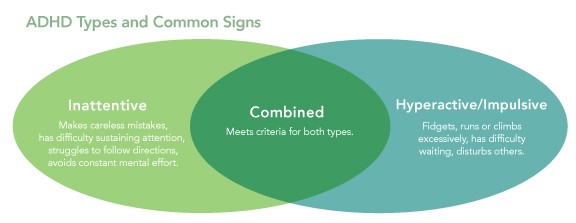Worried your child might have ADHD? We share some clues to look for – and ways to help.
Learn the signs – and how you can help your child
Attention deficit hyperactivity disorder (ADHD) is one of the most-common mental health disorders of childhood. It can also be a common source of family challenges, leading to stressed-out parents, discouraged kids and a less-than-happy home.
The good news? “Early intervention greatly interrupts the risks of developing the disorder,” says Joseph Stegman, MD, FAAP, medical director of
Developmental & Behavioral Pediatrics of the Carolinas, part of Carolinas HealthCare System.
Getting a proper diagnosis and prompt treatment can put problems into perspective, make sense of treatable symptoms and help heal the family dynamic.
Look for Clues
It can be hard to tell the difference between typical children’s behavior and ADHD, but there are some signs you can watch out for.
The three key symptoms of ADHD are inattention, impulsive behavior and hyperactivity. (Kids who show signs of inattention but aren’t hyperactive or impulsive are sometimes said to have attention deficit disorder, or ADD.) Although doctors haven’t found an exact cause, heredity is thought to play the largest role.
Symptoms generally appear by age 6, says Dr. Stegman. They include increased distractibility, excessive energy, disorganization and forgetfulness. (See the image below for more common signs.)

“Look for things that stand out. If your child’s behavior puts their safety at risk, it’s time to take action,” says Dr. Stegman. “That could be running in front of cars, jumping in a pool without knowing how to swim, leaping out a two-story window – or, say a teacher with years of experience can’t manage your child. Those kind of behaviors are beyond typical.”
Treatment Helps
"Because of the social stigma of ADHD, many people don’t get proper diagnosis or support. This often leads to the condition worsening and a decreased quality of life. If left untreated, children can fall significantly behind in academic, family and social settings, or even give up altogether," says Dr. Stegman.
The first step in treatment? Getting an accurate diagnosis. ADHD diagnosis involves several steps: a medical exam, an evaluation of existing conditions, and rating ADHD symptoms based on reports from parents, teachers and, sometimes, the child.
If your child ends up with an ADHD diagnosis, take heart. “There’s help available, and it’s not always in the form of medicine,” says Dr. Stegman. “But,” he adds, “people shouldn’t be so scared of medicine, especially if they or a loved one perform poorly in daily life.”
Dr. Stegman says medicines like the stimulant Adderall can be dramatically effective in managing ADHD symptoms. About 85 percent of children benefit with minimal side effects while others benefit without any side effects. Behavioral therapy can often form part of the treatment plan as well.
“ADHD medicines were approved 60 years ago, so we know the long-term safety of these medications better than anything in anybody’s medicine chest,” says Dr. Stegman.
Parents can go a long way in helping their children, too. One thing parents can work on, says Dr. Stegman, is developing strong non-cognitive skills in their children. Evidence suggests non-cognitive “character” skills, such as motivation, perseverance and self-control, play a key role in intellectual development and one’s success in school and at work.
Nurturing Non-Cognitive Skills
Try these tips to help build character skills in your child.
- Show, don’t tell. Kids copy what they see you do. Not surprisingly, one of the best ways to instill character skills in your child is to model them yourself.
- Increase their exposure. The more activities and diverse experiences your child takes part in, the more opportunities they have to develop character skills. From sports and the arts to clubs and community service, the options are endless.
- Encourage patience and self-control. Before an event you know might be tough for your child – like a lengthy shopping trip or car ride – encourage them to practice patience and get through the event without complaining. Or, to foster self-control, ask your child to try counting silently to 5 or 10 before they react to something that makes them excited or mad.
- Focus on the positive. Children need consistent encouragement and positive feedback to reinforce good behavior. When your child lets someone else go first, waits patiently for lunch, or gets back on that bike after a fall, give them encouragement and praise for doing the right thing.
 “Look for things that stand out. If your child’s behavior puts their safety at risk, it’s time to take action,” says Dr. Stegman. “That could be running in front of cars, jumping in a pool without knowing how to swim, leaping out a two-story window – or, say a teacher with years of experience can’t manage your child. Those kind of behaviors are beyond typical.”
“Look for things that stand out. If your child’s behavior puts their safety at risk, it’s time to take action,” says Dr. Stegman. “That could be running in front of cars, jumping in a pool without knowing how to swim, leaping out a two-story window – or, say a teacher with years of experience can’t manage your child. Those kind of behaviors are beyond typical.”



